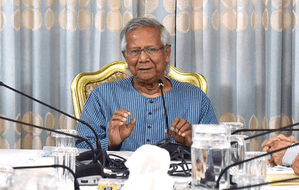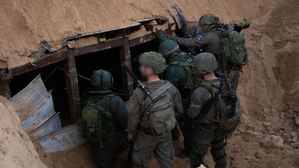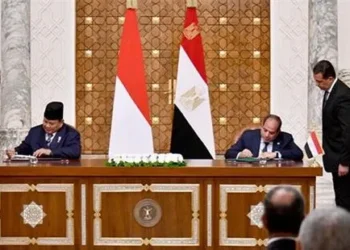She landed on Foreign Policy’s 2014 top 100 global thinkers list and was included in the second volume of Goodnight Stories for Rebel Girls, a best-selling collection of portraits of game-changing women from around the world. This past week, as the Taliban took power in one Afghan province after another, eventually capturing Kabul, Hassani’s presence on social media found even greater resonance. Two powerful images showing girls in radiant blue carrying images of hope as dark, menacing gun-toting fighters loom over them — expressions of the extreme fear, despair and violent repression Afghan women now face — earned tens of thousands of likes on Instagram and were shared thousands of times on Facebook.
Hundreds of followers commented in response, concerned and praying for the women of Afghanistan and for the Kabul-based Hassani’s safety.
Over the past week, women have largely avoided the capital’s public spaces, and many artists have deleted chat messages and social media accounts, fearful of violent, potentially fatal repercussions by the Taliban. After Kabul’s takeover by the Taliban, Hassani’s social media accounts went silent for a few days, leaving fans wondering about her safety. A new image in her recent series was finally published late on Tuesday, entitled Death to Darkness — confirmation that she was continuing to work and give voice to the experience of Afghan women. Hassani’s manager told DW that the artist was not available for an interview but was in a safe, undisclosed location. Publishing the images is a bold move. Most analysts and human rights activists believe the Taliban will institute draconian restrictions and deadly punishments for women, as they did during their rule in the 90s.
Female artists face a doubly dangerous position as women and as creatives doing work that the Taliban has considered in the past to violate its strict interpretation of Islamic law. “Some people think that art is not allowed in Islam and then they feel that they should stop me … If a lot of closed minds come together, they will be very powerful and they can do anything,” Hassani said in a 2016 video interview for The Creators Project.
Born in 1988 in Iran to refugee Afghan parents, Hassani returned to Afghanistan in 2005 to study painting and visual arts at Kabul University. She had already completed her degrees when she took up graffiti and street art in 2010.
The precarious situation of women and girls in the male-dominated Afghan society has been at the forefront of her work since she started spraying. In fact, graffiti’s ability to publicly highlight the challenges that Afghan women face — but also their strength and resolution — was a major reason Hassani chose to work with the medium, she told Street Art Bio.
She wanted to change how people perceive Afghan women, including those who wear the burqa, a full-body covering, she said: “I try to show them bigger than what they are in reality, and in modern forms, in shaped in happiness, movement, maybe stronger. I try to make people look at them differently.”























